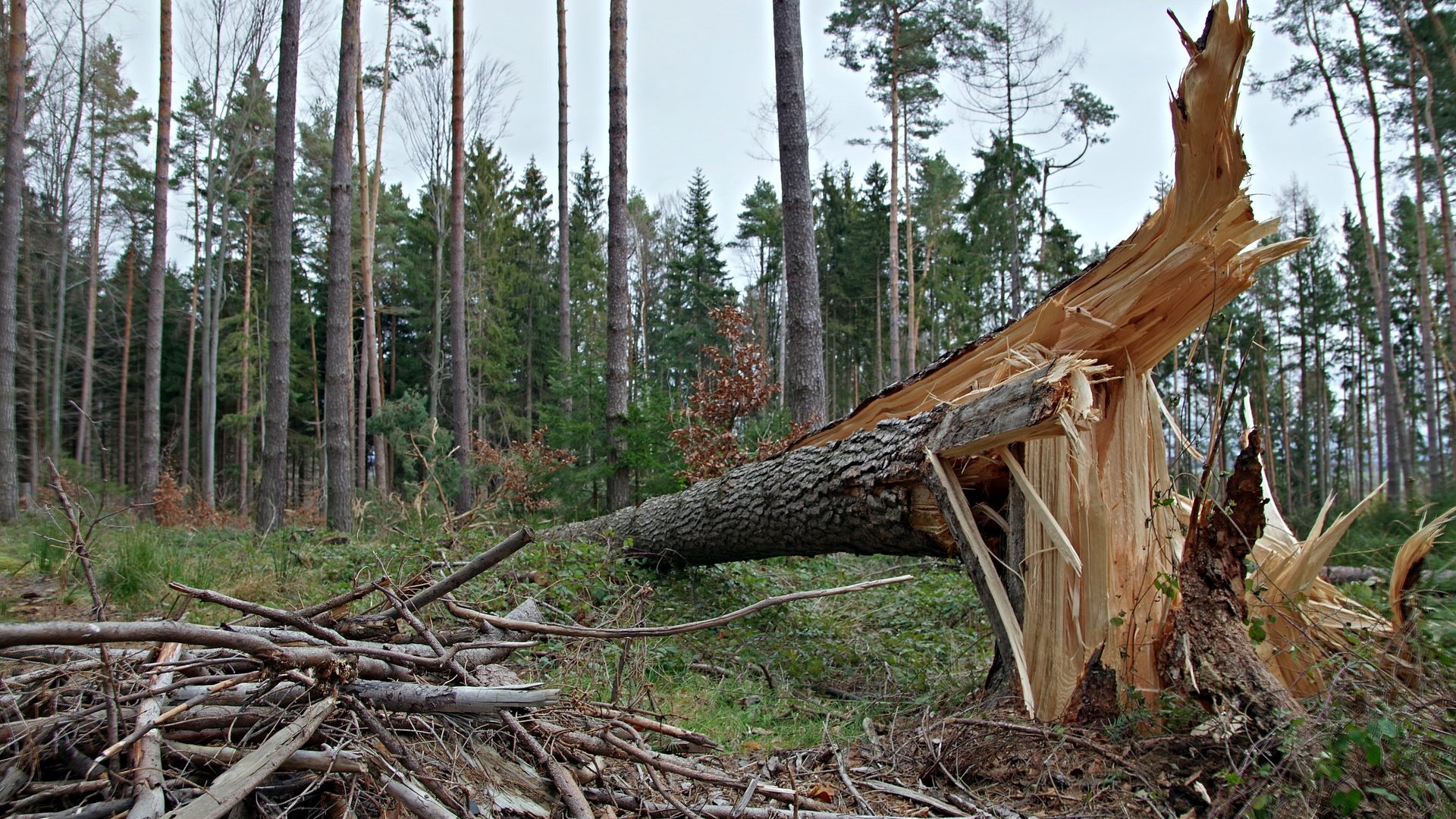Climate change carries with it new risks and challenges, for both forestry and the individual forest owner. Previous studies have shown, however, that there are difficulties within forestry in adapting forest management to new conditions. This study discusses how some forest owners express preferences that are not in line with today’s general forestry, and thereby shows in various ways which forest owners are trying to achieve a more risk- or climate-adapted forestry.
Climate change brings about increased risks as well as awareness
In the latest decade, the potential effects of a changed climate have become increasingly visible in the forest. Above all, storms such as Gudrun and Per have meant devastating consequences for forest owners. The new challenges that are expected to increase alongside growing climate change result in new views of, and relationships with, the forest. This has partly contributed to an increased awareness regarding the risks this carries with it. However, previous studies have shown that forests continue to be managed in relatively the same way as in the past. For example, fir trees were replanted on a large part of the area that had been devastated by hurricane Gudrun, despite the fact that there were documented risks involved with precisely planting fir in large areas.
Among private forest owners there are groups that, based among other things on the damages caused by storms, question these sorts of prevailing traditions around forest management and try to find new ways to determine what sustainable forestry could look like. This study builds on a selection from a larger study using interviews in the case-study areas of Västerbotten and Skåne, in which people who were asked about their forest use brought up these types of questions of their own accord, primarily concerning storm risk and storm damage.
Questioning the traditions of forestry
Within Swedish forestry the forest organizations, such as forestry companies and forest-owner associations, have great influence on how privately owned forest is managed. More directly, this occurs through activities such as consulting and various types of services provided to the private owners. These organizations represent a view of forestry that is concentrated on economic values and timber production. Among other things, this can lead to conflicts with environmental organizations or private forest owners who do not share this view of forestry and forest management. One of the central points of conflict is the definition of what a sustainable use of forest actually entails.
The increased risks brought about by the heavy storms, as well as those in relation to climate change, have meant that even more questions arise as to sustainability when it comes to forest management. One of the perceived dividing lines is found in the view of risk and how various risks should be addressed. The perception tends to be that, within forestry, risks associated with climate change are often described as a given and beyond our control, which makes them independent of management strategies or the way forestry is run. From a sector perspective, while storm damage has extensive effects on the individual forest owner it is still possible to “repair” through replanting, and is thus regarded as a lower risk. However, this evaluation fails to consider the vulnerability of various forest owners – that is, the interests or conditions individual owners might have as regards minimizing their risk, for instance knowledge, resources, economic dependence on the forest, or personal values concerning the particular forest that person owns (which can be experienced as having other values that cannot be replaced if the forest is damaged).
New ways forward for more sustainable forests
This way of looking at sustainability and risk within forestry has resulted in individual forest owners questioning the existing forestry traditions. They do this primarily through discussing both the choices available when it comes to forest management and the – mostly economic – motives that form the basis of today’s forest management. Thereby, strategies for forest management end up not being a given but rather a choice based on various motives.
Similarly, the forest owners in the study also discuss how different types of risks are connected to different types of choices. Based on their focus on values like reducing the risks and protecting the forest from damage, the owners highlight examples that call into question the dominance of fir, and stress the need to design different management and felling methods. These methods can, for instance, have the aim of limiting the risk of storm damage by planting different tree types than those that are the most economically advantageous today, or of applying forest continuity or otherwise trying to ensure that the forest will be less effected by storm damage – this was expressed, for example, in relation to having a responsibility for the forest.
In these ways the forest owners in this study, through both their words and actions, highlight alternatives and other ways to pursue forestry. Even though they represent only a smaller portion of the corps of forest owners, their questioning reflects a diversity and the possibility for alternatives. Thereby, this highlights questions concerning the power to define the risks and possible choices in forestry, as well as different forest owners’ possibilities to enact measures such as adapting their forest to climate change.
Facts
Elias Andersson, E. Carina H. Keskitalo & Sabina Bergstén (2018) In the eye of the storm: adaptation logics of forest owners in management and planning in Swedish areas, Scandinavian Journal of Forest Research

